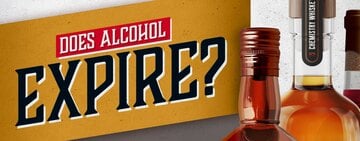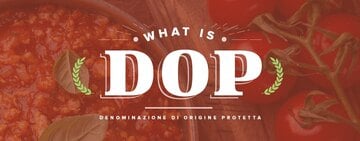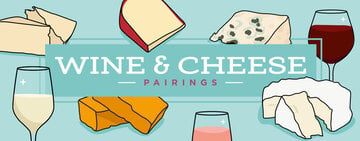What’s the Difference Between Prosecco and Champagne?
Last updated on Sep 22, 2025Janine JonesCelebratory moments often call for a bottle of bubbly to mark the occasion. While many are happy to use Prosecco and Champagne interchangeably, they are distinctly different types of sparkling wine. Prosecco hails from Italy and is typically lighter, fruitier, and more affordable, making it a great choice for casual gatherings. Champagne is a prestigious French sparkling wine known for its complex flavors, elegant bubbles, and higher price tag for momentous events. Keep reading to learn more about the difference between Champagne and Prosecco before you break out the champagne flutes and pop a bottle of sparkling wine for your next toast.
What Is Prosecco?

Prosecco is a popular sparkling wine, originating from the Veneto region in Italy. It is primarily made from the Glera grape variety, although other local varieties can also be used in its production. Prosecco is known for its light and refreshing character, with flavors ranging from fruity notes of apple, pear, and citrus to floral undertones.
Prosecco is typically produced using the Charmat method, where the secondary fermentation that creates the bubbles takes place in stainless steel tanks rather than in the bottle. This method takes 30 to 80 days and results in a fresh and youthful wine with a slightly lower level of carbonation compared to Champagne. Prosecco is best enjoyed young and fresh, ideally within the first two years of its vintage. It is a versatile sparkling wine that can be served on its own as an aperitif or used in cocktails like the classic Bellini or Aperol Spritz on a brunch menu.
What Does Prosecco Taste Like?
Prosecco is known for its fresh and fruity flavors, often featuring notes of green apple, pear, and citrus. It is light-bodied with a crisp acidity and a gentle effervescence. The taste of Prosecco is typically more floral and less yeasty than Champagne, making it a popular choice for those who prefer a sweeter and more approachable sparkling wine option.
Prosecco Food Pairing
Prosecco is an excellent choice to accompany appetizers such as bruschetta, seafood dishes like shrimp scampi, and creamy pasta dishes like fettuccine alfredo. Prosecco also complements desserts like fruit tarts and light cakes, making it a great option for a range of menu items.
What Is Champagne?

Champagne is a sparkling wine that comes exclusively from the Champagne region in France. The primary grapes used in Champagne production are Chardonnay, Pinot Noir, and Pinot Meunier. These grapes are carefully selected and harvested to ensure the highest quality of wine.
Champagne is produced using the traditional method, also known as the methode champenoise or methode traditionnelle. This production process involves a second fermentation that occurs in the bottle, creating the signature effervescence and complex flavors that Champagne is known for. Champagne is aged for a minimum of 15 months, but many producers choose to age their Champagne for much longer to develop more complex flavors and aromas. The aging process can take place in cellars where the bottles are stored horizontally to allow the yeast sediment, also known as lees, to settle. Its unique production methods and strict regulations ensure that each bottle of Champagne delivers a premium drinking experience.
What Does Champagne Taste Like?
With its vibrant acidity, Champagne offers a crisp and refreshing mouthfeel. The flavor notes typically include citrus fruits like lemon and green apple, along with hints of toasted brioche and almond. Champagne also boasts a fine effervescence that enhances the overall drinking experience.
Champagne Food Pairing
Champagne's crisp acidity makes it an excellent choice to accompany seafood such as oysters, sushi, and caviar, as well as light appetizers like cheese and charcuterie boards. Champagne also complements foods like risotto or fried chicken, offering a refreshing contrast to the rich flavors. The bubbles in Champagne help cleanse the palate between bites, making it an ideal choice for multi-course meals or tasting menus.
Prosecco vs Champagne

Prosecco and Champagne are both popular sparkling wines, but there are key differences between the two, like their terroir (geographical origin) and flavor profiles. Prosecco is made in Italy's Veneto region primarily from the Glera grape, while Champagne is produced in the Champagne region of France using primarily Pinot Noir, Chardonnay, and Pinot Meunier grapes. Prosecco is known for its fresh and fruity flavors, while Champagne is typically more complex with notes of toast and citrus. Additionally, Prosecco is made using the quicker Charmat method, where secondary fermentation occurs in stainless steel tanks, while Champagne undergoes the lengthier traditional method, where secondary fermentation takes place in the bottle.
Champagne and Prosecco FAQ
We answer some of the most common Prosecco and Champagne questions below:
Is Prosecco the Same as Champagne?
Prosecco and Champagne are two distinct types of sparkling wines, While both are effervescent and celebratory, they differ in their production methods, regions of origin, and flavor profiles. Prosecco often offers a more approachable and affordable alternative to Champagne, making it a popular choice for casual celebrations and everyday enjoyment. Champagne is considered to be the more elegant option due to its strict regulation and prolonged fermentation process.
Why Is Prosecco Cheaper Than Champagne?
Prosecco is typically cheaper than Champagne due to differences in production methods and regional regulations. Prosecco is made using the Charmat method, which is a faster and less costly process compared to the traditional method used for Champagne. Additionally, the grapes used in Prosecco production are generally grown in larger quantities and at lower cost in the Veneto region of Italy, where Prosecco originates, contributing to its affordability compared to Champagne.
Can You Use Prosecco for Mimosas?
Prosecco's light and fruity flavor profile pairs well with the citrusy notes of orange juice, creating a refreshing and bubbly cocktail. Plus, Prosecco tends to be more affordable than Champagne, making it a cost-effective option for serving mimosas in large quantities at events or brunch services.
Can You Saber Prosecco?
Sabering Champagne adds an extra flare to your festivities. However, when it comes to popping open bottles in style, saber enthusiasts might wonder if they can saber Prosecco like they do with Champagne. Unfortunately, the answer is no. Unlike Champagne, Prosecco typically doesn't have a high enough pressure rating in the bottle to successfully perform the dramatic art of sabering. Most bottles of Champagne have approximately 90 pounds of pressure per square inch, while Prosecco typically only has 50 pounds of pressure, which may only result in a shattered bottle. So while you can still enjoy the delightful bubbles of Prosecco, you may want to reserve sabering for your favorite bottle of Champagne.
When it comes to choosing between Prosecco and Champagne for your menu, you’ll want to consider the flavor profiles, production methods, and price points of each. While Prosecco offers a more affordable and versatile option with its fruity and floral notes, Champagne brings a luxurious and elegant touch with its complex flavors and prestigious reputation. By incorporating both sparkling wines into your menu, you can cater to a diverse range of preferences and occasions, from casual gatherings to special celebrations.
For more products related to Prosecco and Champagne, check out our wine buckets, champagne sabers, and wine service accessories.








